Rocks and Minerals for Kids: 10 Amazing Activities for Powerful Learning Fun
This post may contain affiliate links. Please read my disclosure statement. Thanks for visiting!
Rocks and minerals for kids are super cool ways to make science fun.
When you embark on these types of science adventures, you're exploring some of the most fascinating objects on Earth. Plus, rocks and minerals can be used for all sorts of purposes, from making tools to creating works of art.
Here are 10 fun experiments you can do with rocks and minerals that will help you boost your learning fun and more!
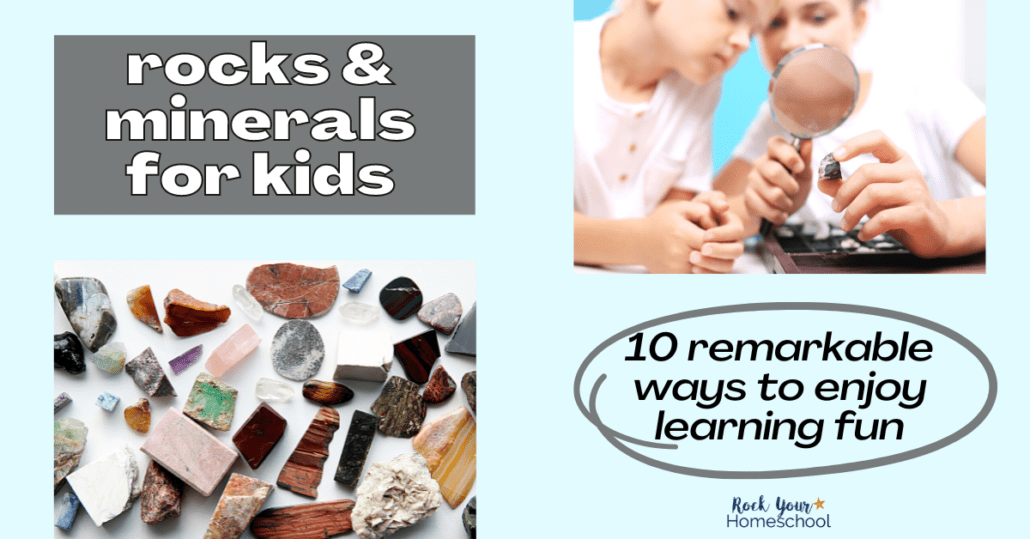
10 Fun Science Experiments with Rocks and Minerals for Kids
To be honest, rocks and minerals used to sound so boring to me. I mean - I'm the girl that skipped Earth Science in high school because I thought it sounded so blah.
And I truly regret that decision now that I've been learning along with my boys in our homeschool - I now know how much I missed!
Rocks and minerals really can be interesting - and, dare I say, fun.
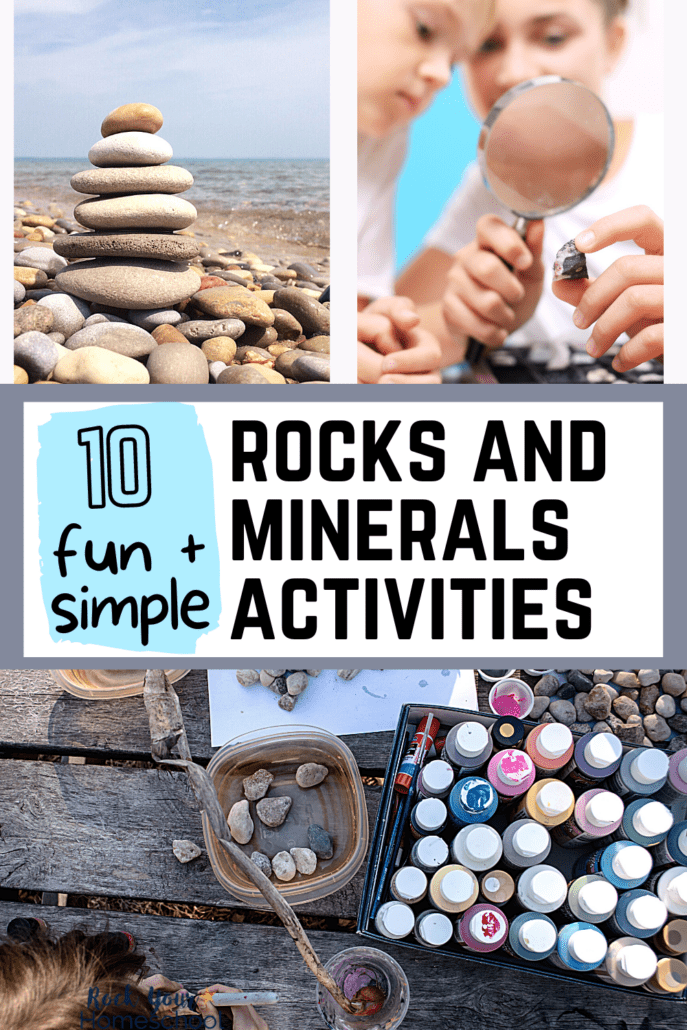
Here are 10 ways to make learning about rocks and minerals fun with your kids:
1. Identify Rocks and Minerals
Try to identify as many different types of rocks and minerals as you can. You can use a book or online resources to help you with this.
Our free printable rocks and mineral cards are also amazing ways to enjoy this suggestion 😊
There are different types of rocks throughout the world, so the ones in your area will depend on the location. For example, Colorado is known for its granite, while Alabama is known for its limestone.
Some of the most common rocks and minerals to be found are:
2. Test the Hardness of Rocks and Minerals
Test how hard different rocks and minerals are. You can do this by scratch test with a knife or other sharp object.
For reference, some common objects and their hardness on the Mohs Scale are:
- Fingernail: 2.5
- Copper penny: 3
- Glass: 5.5
- Steel file: 6.5
- Quartz: 7
- Topaz: 8
- Diamond: 10
A rock’s hardness is measured on the Mohs Hardness Scale, which goes from 1 (softest) to 10 (hardest). For example, talc is a 1 on the Mohs Hardness Scale, while diamond is a 10.
You can test a rock’s hardness by trying to scratch it with another object of known hardness. For example, you can try to scratch quartz with a fingernail (hardness = 2.5), which won’t make a mark. However, if you scratch quartz with topaz (hardness = 8), you'll see a scratch.
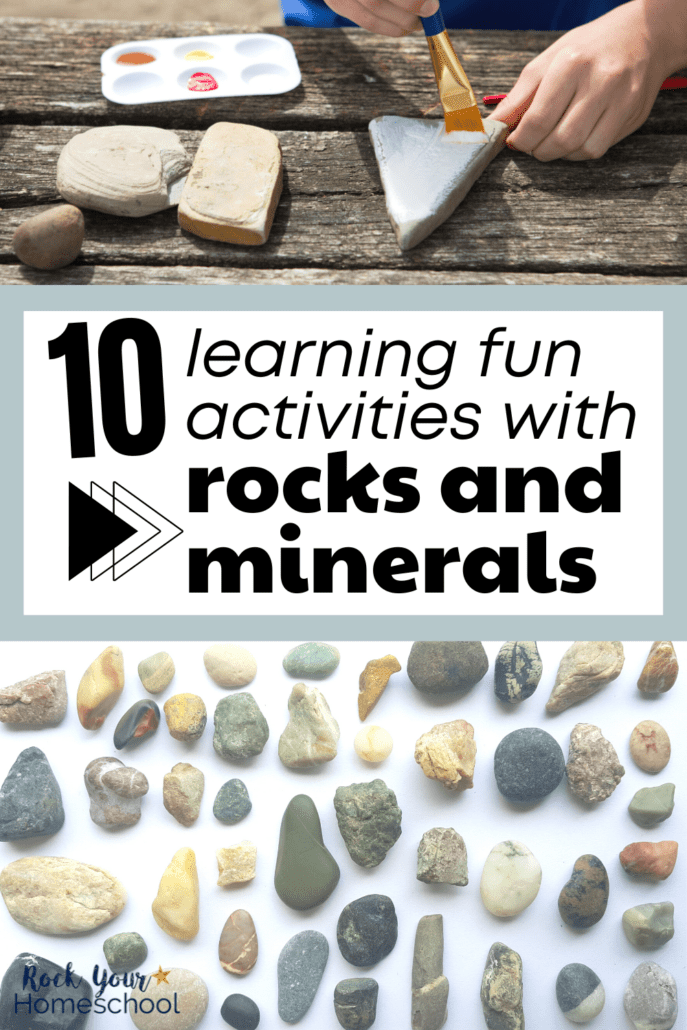
3. Experiment with Chemical Reactions
See how rocks and minerals react to vinegar or other acids. You can do this by adding a small amount of vinegar to a rock or mineral. Lemon juice is another common household acid you can use.
There are a few ways to observe the chemical reactions:
- Soak rocks in vinegar for several days. Note the changes observed in a daily log.
- Observe the changes that happen when you drop vinegar on the rocks.
- Pour vinegar into a cup, add a rock, and observe any bubbling or fizzing.
4. Crush Rocks
Try to crush different types of rocks and minerals. This activity can be done with a hammer or by placing them in a bag and hitting them with something heavy.
Some rocks are much easier to crush than others, due to their hardness and composition. For example, limestone is relatively soft and can be easily crushed with a hammer while granite is much harder and will require a few good hits with a heavy object to break it up.
5. Get an Up Close View
Look at rocks under a magnifying glass or microscope. This activity will help you see all the different details that make up a rock.
What features do the rocks have? Record your observations in a journal.
Note the characteristics you see, such as the:
- Cleavage: the way a rock splits along its natural planes
- Streak: the color of a rock when it is powdered
- Luster: how the surface of a rock reflects light
- Hardness: how easy or difficult it is to scratch the surface of a rock
- Fracture: the way a rock breaks when it is not split along its natural planes
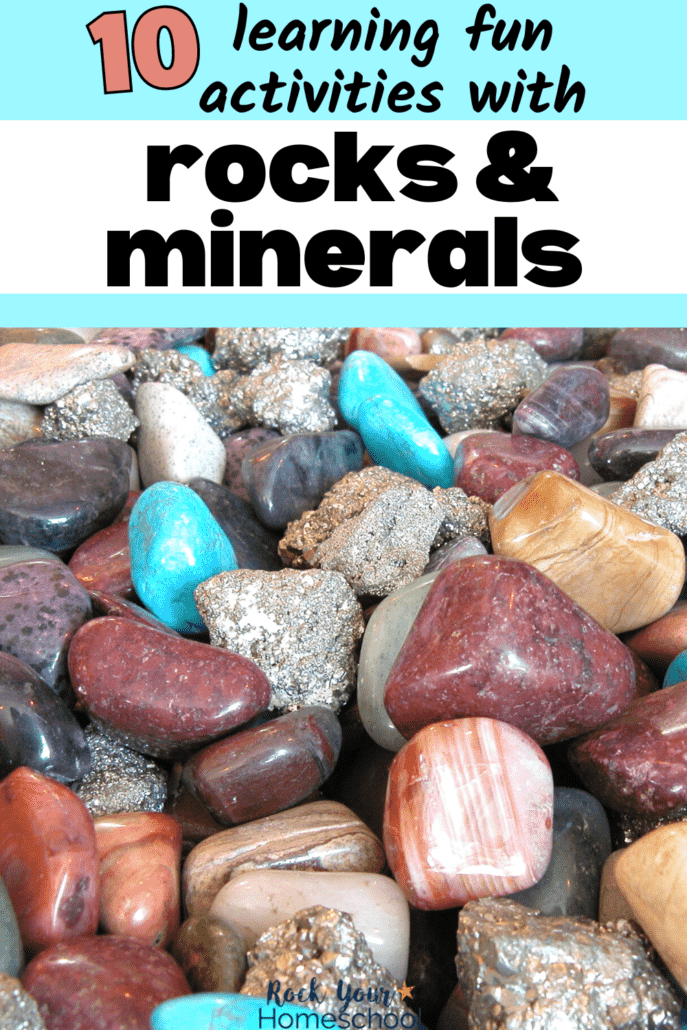
6. Start a Rock Collection
Create your rock collection by finding rocks in your backyard or on a nature hike. Make sure to label each one so you can remember where you found it.
You can display them in a box, on a shelf, or in a shadow box frame. Over time, you can even collect different types of rocks from places you visit and far-off locations.
7. Weigh and Measure Rocks of All Kinds
Compare the weight of different rocks. Use a scale to find the exact weight and make a chart sorting them from lightest to heaviest.
You can also try estimating the weight of rocks before weighing them to see how close your guess is.
Measure rocks by length and width, too, Compare how similar and different rocks and minerals can be.
8. Test Heat Conductivity
Some rocks maintain temperature for longer, due to their heat-conducting properties. For example, granite is a good conductor of heat, while sandstone is not.
Fill a container with ice water and place a rock in it. Record the temperature of the water before and after adding the rock.
Then, heat up a pot of water on the stove and place the same rock in it. Record the temperature of the water before and after adding the rock.
Which type of rock conducts heat better? Does this have anything to do with its hardness or composition?
9. Make Rock Art
There are a few ways you can use rocks and minerals to make beautiful art.
- Make rock art by painting rocks with different colors. You can use acrylic paint, tempera paint, or even just markers.
- Make sand art with different colors of sand. You can find colored sand at a craft store, or you can make your own by adding food coloring to regular sand.
- Use rocks and minerals to make a mosaic. First, glue the rocks and minerals to a piece of cardboard or construction paper. Then, fill in the spaces with grout. Let it dry and then hang it up!
- Use charcoal to make rubbings of fossils.
Once they’re dry, you can display your rocks in a vase, on a windowsill, or outside in your garden.
10. Study Things Made from Rocks and Minerals
Learn about common everyday items made from rocks and minerals. There are rocks all around us!
For example:
- Countertops are often made from granite or quartz.
- Toothpaste contains fluoride which is mined from rocks.
- Cement is made from limestone.
- Glass is made from sand.
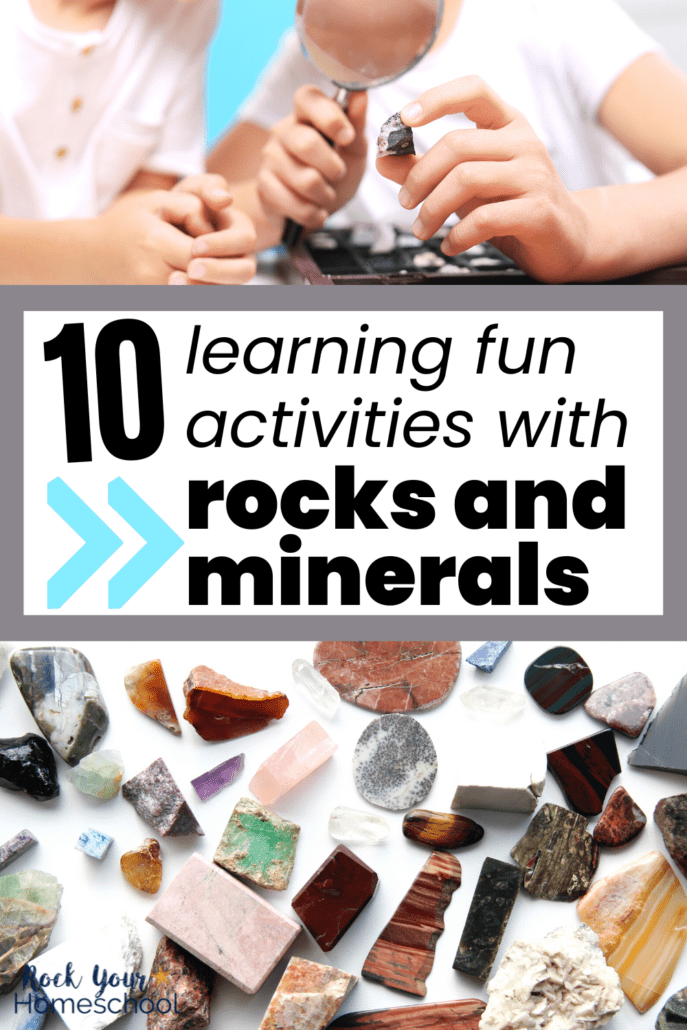
More Tips for Exploring Rocks and Minerals for Kids
Rocks and minerals are all around us and play an important role on our planet and in human life. Learning about rocks is a great way to appreciate the Earth and all its wonders.
If you're looking for even more ways to explore rocks and minerals, here are a few ideas:
- Visit a local rock shop or gem show.
- Attend a lecture or workshop on rocks and minerals.
- Take a trip to a nearby quarry or mine.
- Join a local rock club or hiking group.
- Check out books and websites about rocks and minerals.
- Buy (or make your own) rock tumbler to polish rocks at home.
- Do some volunteer work with a geological surveyor at a natural history museum.
As you can see, rocks and minerals can be a lot of fun to learn about! Hopefully, these ideas have inspired you to go out and explore the world of rocks and minerals.
Got more ideas about learning about rocks and minerals for kids? Please share in the comments area at the bottom of this post!
